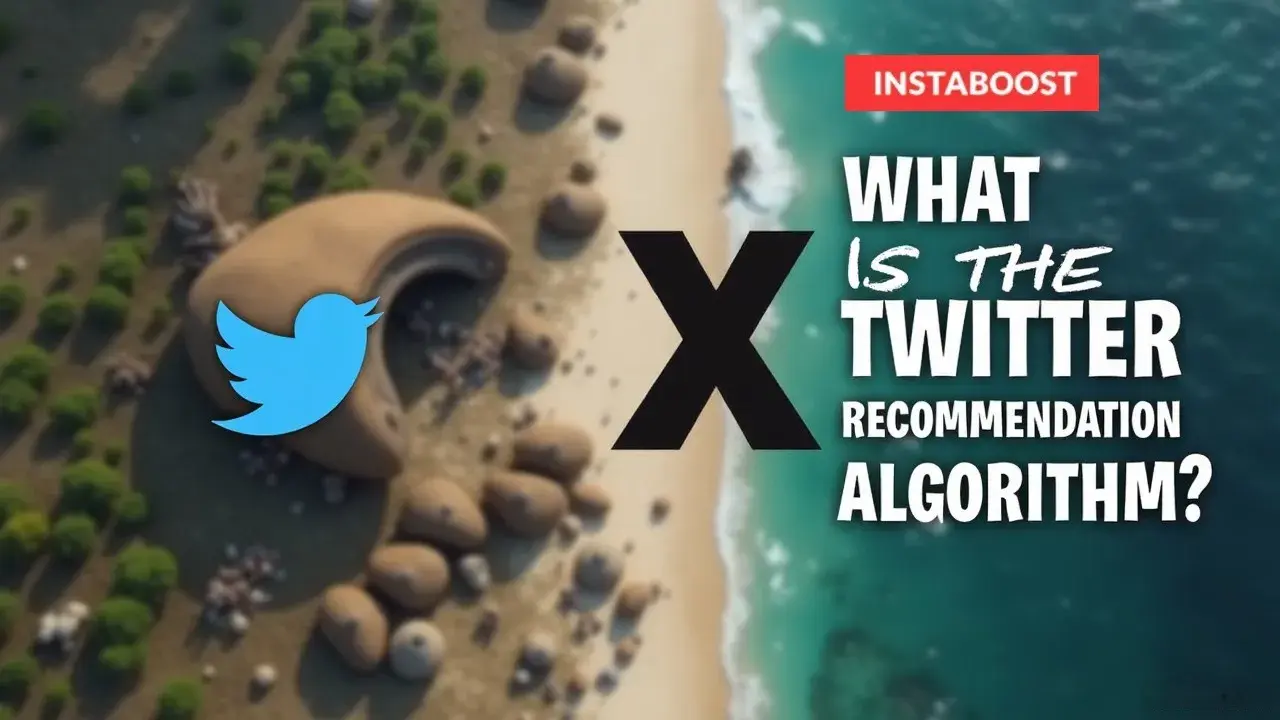What Is the X (Twitter) Recommendation Algorithm?
The recommendation algorithm on X (Twitter) prioritizes posts that sustain engagement and maintain attention. It evaluates steady interactions and watch time to identify content likely to interest more people. Posting when an audience is active and monitoring early engagement in the first hour helps the system gauge relevance and expand reach. Misaligned timing or weak initial response can limit visibility, so aligning post cadence with audience activity is the smart path.
Why Your Tweets Travel – or Stall
The “Twitter recommendation algorithm” is a ranking system that decides which posts get prime placement in the Home feed and search, and which fade into the background. It’s not a single switch. It’s a layered set of models that predict interest and then learn from real behavior over time. At a high level, it scores each tweet on three axes: who it’s from, including author quality and relationship; what it is, covering content type, freshness, and language; and how people respond, with engagement depth and retention. That last axis is where the leverage is. Early momentum – real reading time, profile clicks, human replies, and shares that reach new networks – teaches the system your post belongs in more timelines.
If you pair tight audience timing with authentic comments, creator collaborations, and targeted promotion from reputable sources, you strengthen those retention signals without tripping low-quality filters. This is where clean analytics matter; when you maximize Twitter impressions by watching the first-hour curve, not vanity totals, you can keep iterating your hook, format, and posting windows to build a reliable testing loop.
The algorithm works when your inputs match intent. A concise thread that solves a live problem at 9 a.m. local often beats a generic hot take at midnight. Safeguards also help. Excessive outbound links, repetitive calls to action, or engagement pods can depress reach because they correlate with low session quality.
The algorithm works when your inputs match intent. A concise thread that solves a live problem at 9 a.m. local often beats a generic hot take at midnight. Safeguards also help. Excessive outbound links, repetitive calls to action, or engagement pods can depress reach because they correlate with low session quality.
A smarter path is to blend native media with one clear next step and let qualified paid boosts amplify what already holds attention. The non-obvious insight is that distribution is path-dependent. Once a tweet earns positive signals from the right clusters, subsequent impressions get cheaper. Design for that second wave – seed with aligned followers, then expand through adjacent interests – and the algorithm becomes an accelerant, not a gatekeeper.

Why We Can Trust What We Know
It took me longer than I’d like to admit to see it clearly. The “Twitter recommendation algorithm” isn’t a single switch. It’s a living pipeline that blends public signals, published hints, and what you can see in your analytics. Since Twitter open-sourced a large slice of its ranking code in 2023 and has iterated since, we’ve gained a credible map of how author, content, and engagement features feed into candidate selection and reranking. That matters because credibility isn’t about reverse-engineering every weight. It’s about knowing which inputs consistently move the needle: author history and network proximity, content freshness and clarity, and engagement depth that sustains retention.
When a post earns saves, profile clicks, and replies that spark reply-chains, you’re not just “going viral” – you’re sending high-quality training data the system can learn from with confidence. If you pair real comments and creator collabs with early momentum – say, a small, targeted promotion from a reputable partner – your tweet can pass the first-hour relevance test and graduate to broader distribution without tripping safeguards. The smart path is to combine clean analytics, session-level retention metrics, and timing when your followers are active; even debates about organic twitter followers tend to miss that the system rewards sustained relevance rather than flash spikes.
One non-obvious takeaway: negative feedback density – mutes, “show less,” fast bounces – is often a stronger governor than raw likes, so frame hooks that invite qualified attention rather than empty impressions. In short, treat the algorithm like a ranking market. It works when your signal quality is consistent, your audience fit is intentional, and your measurement is honest enough to shut off low-fit boosts before they teach the system the wrong lesson.
Turn Signals Into Compounding Reach
Most scalable results come from a simple shift: treat the Twitter algorithm like a feedback market, not a slot machine. The ranking system only leans in once it sees you can hold attention, so build a daily testing loop that front-loads early momentum and clean attribution. Use tight, high-signal formats – a strong hook with a concrete payoff within two lines – and post when your core followers are active.
Then monitor the first 60 minutes like an air-traffic controller. Saves, profile clicks, and replies from known engagers are retention signals that move you from candidate selection into reranking more often. If you need a nudge, use targeted promotion sparingly, from reputable sources and only on posts already earning real comments, so any lift teaches the model the right audience rather than confusing it, and remember that superficial boosts, including options to order likes on X, only help when they align with genuine engagement patterns you’re already seeing. Collaborate with creators whose followers match your ideal reader to amplify author features without diluting topic fit, and agree on a specific call to action that invites depth, not vanity likes.
Keep analytics clean. Tag experiments, separate organic from paid, and prune low-quality replies that drag down dwell time. The smart path isn’t more volume. It’s a tighter loop – hypothesis, post, measure, iterate – so the system repeatedly sees you match intent on the same themes. Over a few cycles, you train it to fetch your tweets earlier in Home and search for those topics, which is where distribution compounds. This works when the content, timing, and audience are aligned. If any leg wobbles, tighten that before adding budget. Consistency plus qualified signals beats sporadic virality every time.
Against Algorithm Lore: What Most Playbooks Miss
If I sound skeptical, it’s because I’ve watched the same loop play out. The loudest “growth hacks” treat the Twitter algorithm like a vending machine – push a thread, get impressions. In reality, ranking works more like a credit line, and your limit grows only when you show you can keep people around. That’s why spikes from giveaway retweets or low-quality engagement pods tend to stall. Those inputs weaken retention signals, dilute real comments, and blur attribution.
If you want reach that compounds, pair sharp hooks with watch-time proxies: replies that extend the conversation, quote tweets from creators whose audiences overlap yours, and a steady cadence that keeps recent-performance windows healthy. Paid promotion can speed this up when it’s reputable, well targeted, and capped to protect signal integrity; misaligned boosts, including tools like the tweet visibility booster, often just add variance that muddies who your content is really for. If the fit is off or the setup is sloppy, you’re buying noise that teaches the system the wrong audience. The credible path is boring and measurable: post when core followers are active, seed real engagement from collaborators who actually read your work, and set up clean analytics so you can see which formats hold attention past the second line.
Tools help – schedulers, A/B testing, social listening – when they’re matched to intent and timing, then audited weekly for downstream retention. Search matters too. Optimize one variant per topic cluster so your tweets earn saves, profile clicks, and keyword relevance without splitting data. The counterintuitive move is to resist resetting with new posts every hour. Let winners breathe, route replies through one thread, and stack signals on a single URL or media asset. The algorithm isn’t hiding secrets. It’s waiting for steady proof you’re a safe bet for attention.
From Tactics to System: Make the Algorithm Your Partner
Maybe you’re not done. Maybe you’re just awake. The point of learning the Twitter recommendation algorithm isn’t to memorize knobs. It’s to build a system that compounds attention on purpose. Treat every post like a small experiment with a clear hypothesis: who it’s for, what payoff they get fast, which retention signal you’ll earn, and how you’ll verify it with clean analytics. If it lands, scale the shape through creator collabs, real comments that extend watch time, and targeted promotion from reputable sources matched to your audience’s intent – especially in the first hour, when early momentum sets your credit line.
If it misses, fix the inputs. Sharpen the hook, tighten the payoff within two lines, post when your core followers are active, and cut anything that slows reading. Paid accelerants work when they’re qualified and time-boxed to validate fit, not to paper over weak relevance. Think small campaigns to test segments, with safeguards like frequency caps and UTM-tagged links for attribution; even tools you’ve seen passed around, such as a compact viral retweet pack, should be treated as inputs to test rather than crutches.
Skip the lore and run the loop: seed attention, measure retention, iterate the format, then raise the stakes. Over a month, archive winners and recycle them with new angles. Over a quarter, build a stable of formats you know trigger ranking – polls that spark substantive replies, concise visuals with a single takeaway, or short threads where each tweet earns its keep. The non-obvious edge is to collaborate upstream with creators whose audiences share intent but don’t yet overlap with yours, so their organic comments act as high-trust relevance signals. That’s how you turn signals into compounding reach – and why, when you show you can hold attention, the algorithm steadily leans in.















